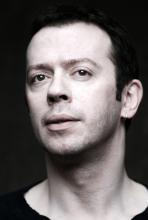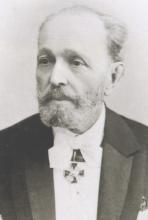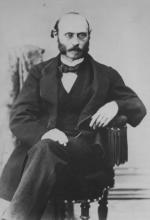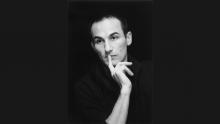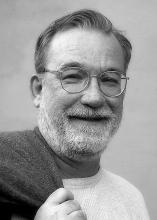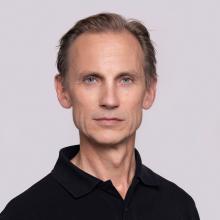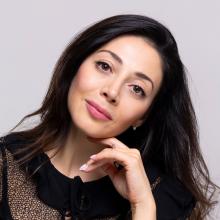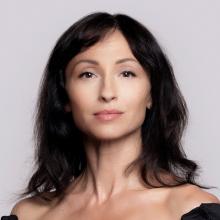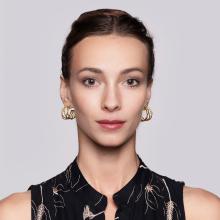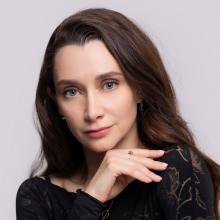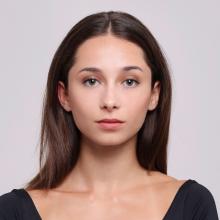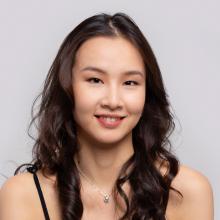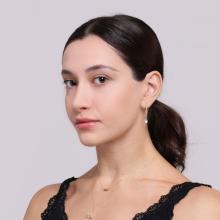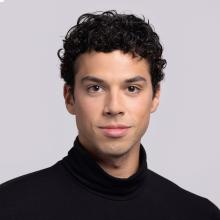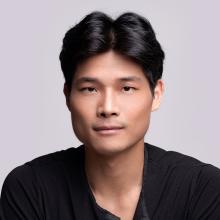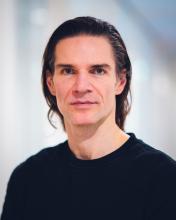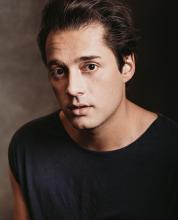Don Quixote

Content
- Credits
- Cast sheet
- The story
- Interview with choreographer Alexei Ratmansky
- The history of the ballet Don Quixote
- Interview with Oliver Haller, Head Costume Department
- Interview with Nicolas Rapaic on the role of Don Quixote
- Biographies artistic team
- Biographies soloists
- Biographies character dancers
Credits
Credits
Don Quichot
Choreography
Marius Petipa en Aleksandr Gorski
Production and additional choreography
Alexei Ratmansky
Music
Ludwig Minkus – Don Quichot (1869)
Additional music
Anton Simon, Volodymyr Shishkov, Cesare Pugni, Yuli Gerber, Eduard Nápravnik, Riccardo Drigo
Concept music dramaturgy
Yuri Burlaki
Music restoration, music text editing
Alexander Troistskiy
Musical adaptation version Ratmansky
Olga Khoziainova
Set and costume design
Jérôme Kaplan
Lighting design
James F. Ingalls
Balletmasters
Rachel Beaujean, Guillaume Graffin, Caroline Sayo Iura, Michele Jimenez, Alan Land, Sandrine Leroy, Larisa Lezhnina, Judy Maelor Thomas
With the cooperation of pupils and students of the Dutch National Ballet Academy (Amsterdamse Hogeschool voor de Kunsten)
Instruction and supervision by pupils of the Dutch National Ballet Academy
Amanda Beck, Marieke van der Heijden, Qian Liu, Karen Schoonheim, Megan Zimny Kaftira
World premiere
26 September 1869, Bolshoi Theatre, Moscow
World premiere production
Alexei Ratmansky with Dutch National Ballet 13 February 2010, Dutch National Opera & Ballet, Amsterdam
Musical accompaniment
Dutch Ballet Orchestra conducted by Matthew Rowe (permanent guest conductor of Dutch National Ballet)
Stagecraft, sets, props, wigs and makeup, and lighting
De Techniek Dutch National Opera & Ballet
Production manager
Anu Viheriäranta
Stage managers
Kees Prince, Wolfgang Tietze
Production supervisor
Gerko Min
Senior carpenter
Jop van den Berg
Lighting supervisor
Wijnand van der Horst
Lighting manager
Ianthe van der Hoek, Angela Leuthold
Followspotters
Dimme van Harten, Panos Mitsopoulos, Carola Robert, Anton Shirkin, Marleen van Veen
Coordinator followspotters
Ariane Kamminga
Sound engineer
Raymond Roggekamp
Props manager
Remko Holleboom
Costume manufacture
Das Gewand, Sasha Keir Theatre Costume, de kostumerij, Bert Nuhaan Theaterkostuums, Maßschneiderei Rainer Schoppe, Trevor Morson, Kim Schouten, UNREAL, Martine Douma & Jeanine Pieterse, Marita Schoonheijm, Esther Datema, Celine Marin, Alexander Harr, Thera Hillenaar, Francis Massink, Els Groot
Assistant costume production
Eddie Grundy
First dresser
Andrei Brejs
First make-up artist
Trea van Drunen
Introductions
Lin van Ellinckhuijsen, Swantje Schäuble, Hanke Sjamsoedin
Total duration
approximately two hours and fifty-five minutes, including two breaks
Dutch Ballet Orchestra
First violin
Hebe Mensinga, concertmeester
Kotaro Ishikawa
Suzanne Huynen
Robert Cekov
Jan Eelco Prins
Tinta Schmidt von
Altenstadt
Majda Varga-Beijer
Michiel Commandeur
Casper Donker
Sandra van Eggelen-Karres
Yulia Gubaydullina
Leonie Kleiss
Catharina Ungvari
Myrte van Westerop
Second violin
Arnieke Ehrlich
Yumi Goto
Willy Ebbens
Christiane Belt
Bert van den Hoek
Anita Jongerman
Jefke van Kerkwijk
Ula Klebanovaite
Iina Laasio
Arwen Terlou
Anna Sophie Torn
Francesco Vulcano
Viola
Naomi Peters
Arwen Salamavan
der Burg
Maria Ferschtman
Joël Waterman
May Bardsley
Giles Francis
Lilian Haug
Audinga Musteikyte
Javier Rodas
Ingerid Waleson
Elías Zaabi Sáez
Cello
Artur Trajko
Lies Schrier
Evelien Prakke
Willemiek Tavenier
Csaba Erdös
Wijnand Hulst
Marjolein
Nieuwenkamp
Oliver Parr
Contrabass
Jean-Paul Everts
Annelies Hemmes
Lucía Mateo Calvo
Nienke Kosters
Florian Lansink
Eudald Ribas
Flute
Sarah Ouakrat
Karin Leutscher
Marie-Cécile de Wit
Oboe
Juan Esteban Mendoza Bisogni
Esther van der Ploeg
Clarinet
Ina Hesse
Joris Wiener
Bassoon
Janet Morgan
Maud van Daal
Horn
Christiaan Beumer
Hendrik Marinus
Ward Assmann
Pablo Bajo Collados
Trumpet
Ad Welleman
Erik Torrenga
Cornet
David Pérez Sánchez
Joost Hettinga
Trombone
João Mendes Canelas
Jurgen van Oostenbrugge
Marijn Migchielsen
Tuba
Isaac Rodriguez Cotrofe
Timpani
Peter de Vries
Percussion
Richard Jansen
Michiel Mollen
René Oussoren
Arjan Roos
Harp
Jet Sprenkels

The story
Read here the story of Don Quixote.
Photo: Nicolas Rapaic in Don Quixote (DNB 2018) | © Altin Kaftira
The story
First act
Scene 1
Don Quixote’s study
Don Quixote’s niece and housekeeper Joanna and his servant Carasco are worried. Their master is being driven mad by all his reading. So they decide to hide his books.
While they are doing so, the Don enters, engrossed in the umpteenth chivalric romance. He identifies with the knights who, long before his time, travelled the world and fought for the honour of a lady at tournaments. Looking up from his book, the Don discovers that his books have disappeared. He believes it to be the work of an angry, all-powerful enemy, with whom he then enters into combat in his imagination. In doing so, he rescues the beautiful Dulcinea, who he imagines is being held captive by monsters.
Suddenly, the household is startled by a loud noise. A group of women are chasing a thief who has stolen a cockerel from them at the market. As the irritated Don sends the women away, he discovers the thief, Sancho Panza, in whom he recognises the squire he so badly needs as a prospective knight errant. Together, the ‘knight’ and his squire set out into the wide world.
Scene 2
A square in Barcelona
Kitri, the daughter of the innkeeper Lorenzo, is having fun with her friends Juanita and Piccilia, and flirting with the young barber Basilio. The couple are madly in love, but Kitri’s father will not hear of it. He wants his daughter to marry the rich, grotesque Gamache, who lives opposite the inn.
It is a holiday, and the street dancer Mercedes performs on the square. So do a group of bullfighters, one of whom is the well-known toreador Espada. Two other-worldly figures arrive as well: Don Quixote and Sancho Panza. While the latter is teased and provoked by the revelling women, the Don is overwhelmed by the beauty of Kitri, in whom he sees his fantasy woman Dulcinea. Just to make Basilio jealous, Kitri plays up to the Don’s advances. But as soon as the opportunity arises, she and Basilio escape together, with Lorenzo and Gamache in hot pursuit.
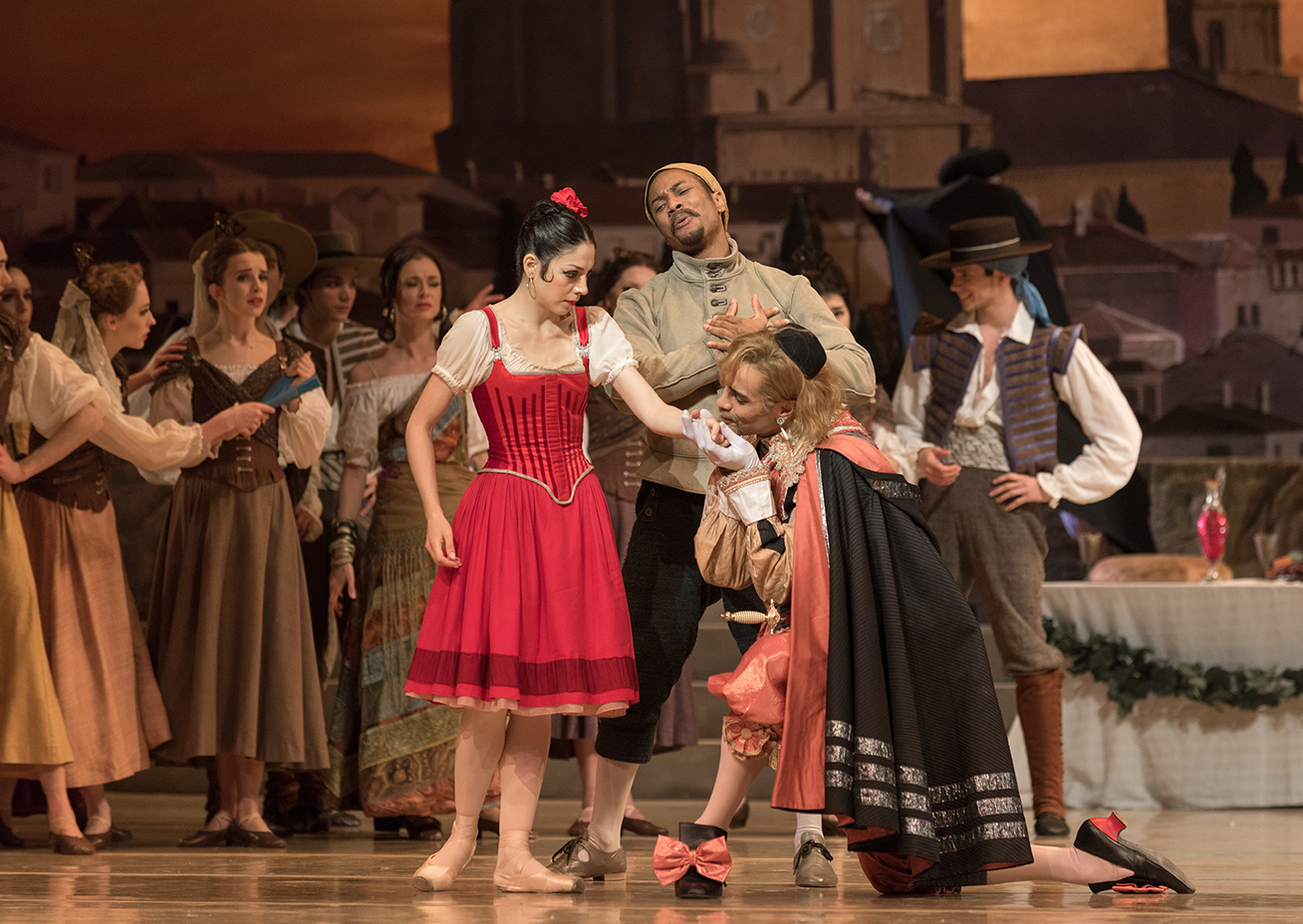
Second act
Scene 1
A plateau in the mountains
In their flight, Kitri and Basilio come across the camp of a troupe of travelling actors. The couple ask the actors for help, and when Lorenzo and Gamache reach the camp, they are told that the young lovers have already left. Then Don Quixote and Sancho Panza arrive as well. The Don believes the characters in the play to be real, and when he sees the princess being beset by the devil, he destroys the whole camp. Everyone goes away, leaving behind a battered, dazed Don. He thinks the windmills on the plateau are monsters and the moon is his Dulcinea.
Scene 2
Gradually, Don Quixote’s nightmare turns into a heavenly vision. He dreams of seductive wood nymphs and charming cherubs, with his radiant Dulcinea in the midst of all this bliss and beauty. As the Don has saved her and the monsters have been vanquished, the queen of the wood nymphs crowns him with a laurel wreath. Sancho Panza appears, along with Joanna and Carasco. They revive their master with wine and escort him back home.
Third act
Scene 1
A tavern in Barcelona full of gitanos (Roma), bullfighters and other people in high spirits
Kitri and Basilio are having fun with Espada, Mercedes and a group of friends. Kitri thinks she has escaped a forced marriage to Gamache. But unfortunately, her father and his entourage manage to discover their whereabouts this time as well. The lovers hide, but Kitri is discovered and taken home.
Scene 2
On the square in front of Lorenzo’s inn
Preparations for the wedding of Kitri and Gamache are well underway. But then Basilio appears and stabs himself because his heart is broken. Kitri realises straight away that he is faking his death. She begs Don Quixote, who has returned in the meantime, to persuade Lorenzo to give his blessing to her and the dead Basilio. Lorenzo sees no harm in that, but as soon as the blessing has been given, Basilio jumps up – he has fooled everyone. Gamache flies into a rage and challenges the Don to a duel. However, neither of them can fight properly and Lorenzo resigns himself to the situation. During Kitri and Basilio’s wedding celebrations, the Don and his squire go off in search of new adventures.

Interview with choreographer Alexei Ratmansky
“Don Quixote – when danced by the right cast – always works”
Read the whole interview with choreographer Alexei Ratmansky.
Photo: Maia Makhateli and choreographer Alexei Ratmansky during a rehearsal of Don Quixote (HNB 2018) | © Altin Kaftira
Interview with choreograaf Alexei Ratmansky
“Don Quixote – when danced by the right cast – always works”
““Maybe”, suggests Alexei Ratmansky”, Don Quixote is so popular in Russia because it’s so cold there and things always get so ‘heated’ in this temperamental ballet.” From the moment he breathlessly watched Vasiliev and Maximova’s performance as a young ballet student, he has never tired of the ballet – unlike other famous classics.
“Alongside choreographing new works”, says Alexei Ratmansky (56), “I’ve always been interested in adapting and re-staging existing ballets. Not only because I was often expected to do so in the positions I held, but also because it’s a good way of learning and developing as a choreographer. By studying the classics and getting inside the minds of the great choreographers, as it were, you can learn a great deal about the principles and methodology of the profession.”
Original libretto
After creating new versions of the nineteenth-century ballet Le Corsaire (2007) and the Soviet ballet Flames of Paris (2008) for the Bolshoi Ballet (of which he was artistic director from 2004 to 2008), Don Quixote was the next project on Ratmansky’s ‘wish list’. As he says, he grew up with the ballet, and besides being familiar with many other versions, he knows the productions by the Mariinsky Ballet and the Bolshoi Ballet back to front. “And the interesting thing is that both companies claim to dance the Alexander Gorsky version, yet there are considerable differences between their two productions.”
For his version for Dutch National Ballet, Ratmansky decided to return to the source. In other words, to the original version created by Marius Petipa in Moscow in 1869, which was not only revised by Petipa himself, but also adapted twice later on by Gorsky. For the process, Ratmansky had placed his hopes in the Harvard University library, where the choreographic notations of several nineteenth-century Russian ballets are kept (having been smuggled out to the West by ballet regisseur Nicholas Sergeyev shortly after the Russian Revolution). But unfortunately, it turned out there were no surviving written records of Petipa’s versions of Don Quixote, nor of Gorsky’s adaptations.
There were some other sources, however, such as the original libretto by Marius Petipa, annotated music scores, old programmes, reviews, memoires and historical books. “Putting all these sources together sheds some light on the subject and clarifies here and there what was originally by Petipa, what changes Gorsky made, and what alterations and additions were made later on. But…”, stresses Ratmansky, “we can’t really be certain who did what and whether the choreography of the various scenes also remained the same. The productions of Don Quixote that are danced today are the result of more than 150 years of performance history, during which each generation has changed, added and/or cut things.”

Respect for tradition
That is why, says Ratmansky, the version he made for Dutch National Ballet in 2010 should not be seen as the original choreography, or as a reconstruction of the original version. “We simply don’t know what was original.” Despite several of his own additions, however, his production remains a traditional work. “I’ve made use of all the information I’ve been able to find, all the versions I know, and all the famous dances and steps traditionally associated with the ballet. And using that as the basis, I made my own decisions, with great respect for tradition.”
In doing so, he regularly returned to Petipa’s original libretto. “It’s often the case that the more a ballet has been performed and the more time has elapsed since its premiere, the simpler the story of the ballet has become. Connecting elements are cut out and storylines ignored, because choreographers or dancers think they don’t matter. When you then look at the original libretto, some things suddenly make sense and are more logical, and you find out that the story is much less superficial and silly than you’d assumed all this time.”
As an example, he gives the first scene in Don Quixote’s study, for which he takes all the time required by Petipa’s libretto. “In the Bolshoi version, this scene now lasts no longer than one or two minutes, but I thought it was important for the audience to get to know the characters of Don Quixote and Sancho Panza before all the dancing gets going.”
Other choices and scenes in Ratmansky’s choreography are also based on Petipa’s libretto, such as the dance of the cactus men who appear in Don Quixote’s visions, and the shift of Basilio’s supposed suicide to the last scene of the ballet. “He usually stabs himself earlier on, but it’s far more logical for him to do it when Kitri is on the point of getting married to Gamache.”
No belly dance
Where Ratmansky draws the line, however, is the multitude of character dances that have been added to the ballet over the years. “That happened mostly in the nineteen-thirties and forties, when the companies in both Moscow and Leningrad (as it then was – ed.) had some wonderful character dancers who created their own dances in order to show off. But nowadays, these dances look dated and are inferior to the level of the rest of the choreography in my opinion. And anyway, I’m aiming to create a less eclectic production. I’m convinced that today’s audiences can do without all the ‘entr’actes’ that actually have nothing to do with the story, such as the sailors’ dance that has been woven into the Bolshoi version for some reason, or the oriental belly dance that appears in the Mariinsky version.”
On the other hand, Ratmansky has choreographed several new sections himself, such as the scene in which Kitri and Basilio join a group of actors, the dance of the monsters that appear to Don Quixote in his nightmare and the fandango in the last act.

Stiff old man
Ratmansky thinks it’s important to have a clear storyline, and he hopes that reducing the number of ‘interruptive’ elements will reinforce the energy and dynamics of the ballet. He has also provided more depth to certain scenes, so that the production as a whole looks less two-dimensional than is now often the case. For instance, he has given a lot of thought to the characters of Don Quixote and Sancho Panza. “These roles are usually played by dancers who, though they may look the part, aren’t necessarily good actors as well.”
However, Ratmansky has not made any stronger links to Cervantes’ novel, even though he valiantly ploughed his way through the hefty book. “It’s very difficult to ‘squeeze’ Cervantes into this ballet. In the novel, the main character is Don Quixote, but the ballet revolves around the dancers who play Kitri, Basilio and their friends, and the wood nymphs and cherubs who appear in Don Quixote’s dream. I think it would look very strange to have Don Quixote himself dancing about. When all’s said and done, he’s supposed to be a stiff old man.”
Circus image
Ratmansky is well aware that a certain ‘circus ballet’ image is attached to Don Quixote. “Actually, the story comes in second place in this ballet. Yes, of course it’s about two young people in love, who have to overcome obstacles in order to come together. But there’s no question of heavy drama. Nobody dies and neither does the story have any deep poetic or philosophical slant. The love between Kitri and Basilio merely ‘colours’ the ballet, just as the Spanish setting serves no other purpose than to lend ‘colour’ to the production. The ballet is principally about beautiful, energetic dancers, who get plenty of opportunity to display their virtuosity. Don Quixote is about the beauty of classical ballet technique and about the pleasure you feel as a dancer when you command the finer points of that technique.” So Ratmansky gives the principal dancers of Dutch National Ballet some freedom in adapting the steps of their pas deux and solos. “After all, this ballet is essentially about each dancer being able to show off their best qualities.”
Ratmansky admits that this lack of a deeper meaning has resulted in Don Quixote long being regarded as ‘less interesting’ by serious ballet historians, and he suspects this may also be why it has hardly been researched and why the notation of the ballet has not survived. But the fact remains that Don Quixote is still one of the best loved and most successful ballets today, in Russia and elsewhere. And Ratmansky knows all too well why this should be the case. “Despite Tchaikovsky’s wonderful music, I can sometimes get too much of Swan Lake or The Sleeping Beauty, but Don Quixote – when danced by the right cast – always works.”
Dutch text: Astrid van Leeuwen

History of Don Quixote
How Cervantes’ literary masterpiece developed into a virtuoso ballet
Picture: Gravure by Karl Wyermann after a drawing by Ivan Agapi (1872) - Dream scene from Don Quixote
How Cervantes’ literary masterpiece developed into a virtuoso ballet
Featuring snappy pointework variations, dizzying pirouettes and dazzling leaps, Don Quixote has been one of the showpieces of the ballet repertoire for more than 150 years. In 2010, the Netherlands got its first ‘own’ production of Don Quixote, in an adaptation by the leading American-Ukrainian-Russian choreographer Alexei Ratmansky.
If there is one work that has had a great impact on world literature, that work has to be El ingenioso hidalgo Don Quijote de la Mancha, the magnum opus of the Spanish writer Miquel de Cervantes Saavedra, published in two parts in 1605 and 1615. The book (translated into English as The Ingenious Hidalgo Don Quixote de La Mancha) earned Cervantes the title of ‘founder of the modern novel’. It inspired many generations of writers and thinkers, the adventures of the knight errant and his squire were portrayed by famous artists, pieces of music were dedicated to the Don, and countless films and theatre productions were based on the man who tilted at windmills.
Over the past centuries, Cervantes’ novel has also been a source of inspiration for choreographers. As far as we know, the first ballet version of Don Quixote was created in 1740 by Franz Hilverding, a dancer and ballet master at the Viennese court. Whereas in this ballet version and later ones, the main role was still played by the ‘knight with the sad face’, in the nineteenth century most ballets switched their focus to the second part of Cervantes’ novel. This tells of the comic intrigues surrounding the lovers Quiteria (Kitri in the ballet) and Basilio, and the wealthy fool Camacho (Gamache) to whom Quiteria has been promised in marriage by her father.
Dancing cactus men
The same applied to the version created for the Bolshoi Ballet in Moscow, in 1869, by the French-Russian choreographer Marius Petipa (famed for ballets like The Sleeping Beauty, The Nutcracker and Swan Lake), to specially composed music by Ludwig Minkus. Besides being the greatest choreographer of the nineteenth century, Petipa was also blessed with a good nose for topical themes. For instance, he created his successful ballet The Pharaoh’s Daughter following the spectacular archaeological excavations in Egypt, took his inspiration for The Daughter of the Snows from the first polar expeditions, and made Don Quixote at the time that Cervantes’ novel was enjoying great popularity in Russia, having just been translated into Russian for the first time.
Aware of the worldly tastes of the Moscow audiences, Petipa (who had worked for a time in Spain) incorporated several Spanish folk dances and some theatrical scenes and elements into his production. For example, he had Don Quixote pursued in his visions by a group of dancing cactus men, and the scenery included a moon (in which the Don saw his beloved Dulcinea) that alternately laughed and cried big tears. When Petipa revised his work two years later for the Imperial Ballet in St Petersburg, where the audience’s tastes were more sophisticated, he cut out such effects. He refined the Spanish character of the ballet and placed much greater emphasis on the pure classical choreography.
Down with symmetry!
Nearly thirty years and many productions later, the Russian choreographer Alexander Gorsky made two adaptations of Petipa’s Don Quixote, also with an intervening period of two years: one in Moscow (1900) and one in St Petersburg (1902). Petipa was then 82 years old and was greatly displeased. In his memoires, he described Gorsky’s alterations as ‘meaningless innovations and changes’ and accused him of seriously lowering the quality of his production. The main change Gorsky made was to heighten the dramatic expression and thereby give the corps de ballet a bigger role in the action. He scattered the dancers over the stage, thus breaking with the strictly symmetrical lines and patterns of his predecessor. As he explained to a journalist prior to the Moscow premiere, he hated symmetry.
It is uncertain precisely which aspects of the much later productions of Don Quixote come from Gorsky and which have been preserved from Petipa’s original production. Today’s productions of the ballet often combine the symmetrical ‘seguidilla’ in the first act with asymmetrical choreography in the dream scene, which fact alone supports the view that present-day versions of Don Quixote bear the hallmarks of both choreographers.

Don Quixote’s journey to the West
For a long time, Don Quixote was almost exclusively reserved for audiences in Russia, where it is still received with overwhelming success today, presented by the Mariinsky Ballet (with additions by Fyodor Lopukhov and Nina Anisimova) and the Bolshoi Ballet (in a new version by Alexei Fadeyechev). The Russian dancer Anna Pavlova did dance a much shorter version of the ballet in the West, which was premiered in London in 1924. But it was only around forty years later that the first full-length twentieth-century performances took place. In 1966, the Bolshoi Ballet danced Don Quixote in New York. Four years earlier, the ballet was performed for the first time by a Western company – Ballet Rambert in England – in a version staged by Vitold Borkovski, from Poland.
However, it was mainly the versions by Rudolf Nureyev (created for the Vienna State Opera in 1966) and Mikhail Baryshnikov (created for American Ballet Theatre in 1978) that contributed to the growing popularity of the ballet in the West. These two star dancers, who emigrated from Russia, based their versions on the Petipa/Gorsky production, and each danced the role of Basilio in their own inimitable style.
Cast-iron technique
The majority of twentieth-century productions of Don Quixote are set to the music of Ludwig Minkus, with occasional additions by other composers. However, some choreographers chose to use different music. Particularly noteworthy among them are the 1979 version by John Neumeier, to music by Richard Strauss, and the 1965 version by choreographer George Balanchine and composer Nicolas Nabokov. In the latter, Balanchine himself danced the role of the knight errant and admirer of Dulcinea, whose role was danced by the nineteen-year-old Suzanne Farrell, whom Balanchine actually adored in real life.
Over the past years, many dancers have contributed to the fame and glory of the characters of Dulcinea/Kitri and Basilio. They are some of the most challenging roles in the classical ballet repertoire. The ballerina needs cast-iron pointe work technique, her partner has to be able to pirouette endlessly, and a light-hearted nonchalance and explosive jumps are demanded of them both. A new standard was set for the role of Kitri in the fifties and sixties by the Russian ballerina Maya Plisetskaya. Among other things, she introduced the head-kick jeté that is now performed all over the world. Of the many generations of ballerinas who followed her, there have been outstanding interpretations of the role of Kitri by Gelsey Kirkland from America, ballerina assoluta Sylvie Guillem from France, Marianela Núñez from Argentina, and Svetlana Zakharova, Natalia Osipova and Ekaterina Krysanova from Russia. Besides Nureyev and Baryshnikov, the most acclaimed Basilios of recent decades include Vladimir Vasiliev, Alexander Godunov, Ivan Vasiliev (no relative) and Danill Simkin from Russia, the Cuban-American dancer Fernando Bujones and Carlos Acosta from Cuba. All of them, but certainly also the younger generation of principals with Dutch National Ballet and other major international companies, have raised both main roles to even greater heights – through their often nigh on impossible technique.
Dutch text: Astrid van Leeuwen

A tutu like a painting
Don Quixote audiences can gaze for hours at the most impressive ballet costumes. The costume parade reaches its climax in the last scene, when the protagonist Kitri exchanges her long skirts for a gorgeous red tutu. “One of the most beautiful we have”, says Oliver Haller, head of Dutch National Ballet’s costume department.
Photo: Diego Velázquez’ Infanta Margarita Teresa in blue dress
A tutu like a painting
Don Quixote audiences can gaze for hours at the most impressive ballet costumes. The costume parade reaches its climax in the last scene, when the protagonist Kitri exchanges her long skirts for a gorgeous red tutu. “One of the most beautiful we have”, says Oliver Haller, head of Dutch National Ballet’s costume department.
In designing the costumes for Don Quixote, designer Jérôme Kaplan was faced with a big challenge. He had to reproduce a world that never really existed, as the story on which the ballet is based – a passage from Miguel de Cervantes’ novel Don Quixote – is set at the beginning of the seventeenth century. The ballet, however, includes characters and situations that didn’t exist yet in those days. So Kaplan had to think up designs for garments that give the feeling they could have existed in the seventeenth century, despite not being around at the time. He found the solution in paintings by the famous seventeenth-century artist Diego Velázquez, which Kaplan took as the basis for the style of his costumes.

Covered in trimmings
The iconic red tutu worn by Kitri in the last scene, for example, is inspired by the painting Infanta Margarita Teresa in a Blue Dress. Oliver Haller says, “When Jérôme Kaplan presented his designs, he said, ‘I want the dress of the Infanta Margarita, but then as a tutu’. Ultimately, it became a real showpiece – a tutu that stands out. The decorations on the dress of the Infanta have also been applied to the tutu, both on the bodice and on the top layer of the tulle skirt. Then you get that typically Velázquez look.”
But those decorations that give a wow effect are also precisely what makes the tutu one of the most challenging in the collection of Dutch National Ballet. Haller says, “All the trimmings make the top layer of the skirt very heavy, certainly compared to the tutus of Swan Lake, for instance, where the decorations are only on the bodice. The weight is a challenge for the ballerina and her partner, but also for us, as the heavy top layer makes it very difficult to get the skirt to stick out straight. In order to achieve that, we’ve added extra layers of tulle. But however hard we try, after it’s been worn a couple of times the tulle gets softer and the skirt sags again. So we have to keep adding new layers of tulle or replacing old ones.”
Ballet rule
One striking point on which Kitri’s costume differs from the dress in Velázquez’ painting – apart from the obvious difference between a hoop skirt and a tulle skirt – is the colour. It is Infanta Margarita Teresa in a Blue Dress, but Kitri in a red tutu. So was ‘Kitri in a blue tutu’ never a possibility? “No, because Kitri’s colour is red”, explains Haller. “Just as Cinderella costumes are nearly always silvery grey and nearly all Giselles wear blue in the first act. It’s a sort of rule in the world of classical ballet, and moreover the colour red is often associated with Spain. So right from the outset, it was decided that our Kitri would wear a red tutu.”
Text: Rosalie Overing

‘There’s a Don Quixote in all of us’
The title role of Don Quixote is actually a character role, and its interpreter expresses himself through mime rather than dance. It is still one of the best roles in which Nicolas Rapaic - former soloist Dutch National Ballet - has had the opportunity to perform throughout his career.
Photo: Nicolas Rapaic (l) and Frans Schraven - Don Quixote (2018) | © Altin Kaftira
‘There’s a Don Quixote in all of us’
Nicolas Rapaic talks about the role of Don Quixote
Whereas the titles of ballets like Giselle, Cinderella and Raymonda give away which character is performing the main dancing role, Don Quixote can be misleading for prospective audiences. The title role of Don Quixote is actually a character role, and its interpreter expresses himself through mime rather than dance. Yet it is still one of the best roles Nicolas Rapaic has had the opportunity to perform throughout his career.
The Frenchman Nicolas Rapaic, formerly a soloist with Dutch National Ballet, ended his professional career as a dancer in 2008, but has regularly returned to the stage since then to perform character roles. These have included the king in The Sleeping Beauty and Grand Duke Sandor in Raymonda, and this autumn he will be putting himself in the shoes of Don Quixote for the second time. Rapaic says, “Everyone knows Don Quixote; he’s larger than life and he’s one of the most interesting and challenging roles I’ve ever done.”
Admirable
One of the things that appeals to Rapaic is the many layers of the character. Despite Don Quixote’s comical antics – he tilts at windmills, sees monsters that aren’t there and tries to rescue a woman who doesn’t exist – Rapaic thinks there’s far more to him than the silly old fool most people see in him. “Don Quixote is actually an admirable figure. He’s very idealistic and is prepared to give up the life he has, and all its certainties, for his ultimate dream: becoming a knight. He makes his own decisions and sticks firmly by them, no matter what other people may think of them. This allows him to create his own reality, instead of merely undergoing his life. That inspires me.” Don Quixote’s idealism is a trait that Rapaic can identify with. “There’s a little Don Quixote in all of us. I firmly believe that everyone needs something to strive towards, as that’s what makes life worth living.”

Tapping emotions
Don Quixote’s complexity is also what distinguishes the role from the other character roles Rapaic has performed. “If you play the king in The Sleeping Beauty, for instance, your character is a king and nothing else. In that capacity, you’re part of a magical whole and that’s wonderful, but a role like Don Quixote has much more depth to it. Don Quixote has a history and undergoes a transformation in the ballet. He loses himself in his dream and ends up in a conflict between fantasy and reality, whereby he experiences feelings of love, fear and sadness. So as an actor, you have to tap your own emotions and you’re challenged to push your limits.”
When Rapaic first learned the role in 2018, he therefore had to take a big step out of his comfort zone. “But Frans Schraven, who was then playing the role of Sancho Panza (Don Quixote’s partner in crime – ed.), and ballet mistress Sandrine Leroy were a huge help. They both had enormous energy and pushed me in a positive way. Now I’m doing the role for the second time, the process is different, but no less intense. This time, I’ve read the books, in order to understand Don Quixote even better, and I’ll do my utmost to pay him the attention he deserves.”
Text: Rosalie Overing
